 Montalcino, on its 567-metre perch upon a hilltop from which the mighty fourteenth century Fortress stands out, reigns over the surrounding countryside. In its labyrinth of streets, with workshops, small cafés and shops featuring typical local products (in addition to the famous wine, there is honey and local biscuits called "Bones of the Dead"), must-sees include the beautiful City Hall, the Bishop's Palace, home of the Museums of Montalcino (Diocesan, Civic and Archaeological with important works of Sienese artists from the XIII-XVI centuries including Bartalo di Fredi, il Sodoma, Bartolmeo Neroni), the old crucifix from Sant'Antimo dating to the mid 1100s and the churches of Sant'Agostino, Sant'Egidio and San Francesco all built between the XIII and XIV centuries as well as the Sanctuary of the Madonna del Soccorso. Just outside the town near Castelnuovo dell'Abate in the Starcia Valley, there is the Romanesque Abbey of Sant'Antimo, intimate and impressive temple surrounded by an almost enchanting atmosphere, founded by Charlemagne in 781. There are numerous castles in the territory of Montalcino among which a mention goes to Poggio alle Mura of Lombard origin. Montalcino undoubtedly has many facets. Symbol of Siena since 1555 when it offered the republican government its last refuge against the imperial troops of Charles V, it even represents the outer limits of Sienese soil bordering the forests of the Maremma and the steep slopes of Mount Amiata. The wine facet of Montalcino cannot be overlooked either; home of Brunello which has been defined as the best and most famous Italian wine.
Montalcino, on its 567-metre perch upon a hilltop from which the mighty fourteenth century Fortress stands out, reigns over the surrounding countryside. In its labyrinth of streets, with workshops, small cafés and shops featuring typical local products (in addition to the famous wine, there is honey and local biscuits called "Bones of the Dead"), must-sees include the beautiful City Hall, the Bishop's Palace, home of the Museums of Montalcino (Diocesan, Civic and Archaeological with important works of Sienese artists from the XIII-XVI centuries including Bartalo di Fredi, il Sodoma, Bartolmeo Neroni), the old crucifix from Sant'Antimo dating to the mid 1100s and the churches of Sant'Agostino, Sant'Egidio and San Francesco all built between the XIII and XIV centuries as well as the Sanctuary of the Madonna del Soccorso. Just outside the town near Castelnuovo dell'Abate in the Starcia Valley, there is the Romanesque Abbey of Sant'Antimo, intimate and impressive temple surrounded by an almost enchanting atmosphere, founded by Charlemagne in 781. There are numerous castles in the territory of Montalcino among which a mention goes to Poggio alle Mura of Lombard origin. Montalcino undoubtedly has many facets. Symbol of Siena since 1555 when it offered the republican government its last refuge against the imperial troops of Charles V, it even represents the outer limits of Sienese soil bordering the forests of the Maremma and the steep slopes of Mount Amiata. The wine facet of Montalcino cannot be overlooked either; home of Brunello which has been defined as the best and most famous Italian wine. Sant'Antimo is one of the most beautiful Romanesque structures, probably Cistercian, with evident details of Lombard style. Legend has it that the Abbey was built by emperor Charlemagne's will in 781. The story goes that on the way back from Rome along the via Francigena, the emperor ran the risk of being hit with the plague, as many of his soldiers were, which was raging in the area located at the foot of Mount Amiata. Near the Starcia, the emperor made a vow asking for protection for himself and for his troops and that the powerful plague cease. For the grace that he received, he founded the Abbey of Sant'Antimo. The current structure substituted the pre-Romanesque basilica in 1118 as attested by the inscription on the main altar steps, which also bears the name of the donor, Bernardo degli Ardengheschi, and on a column of the ambulatory (aisle around the apse). The construction of the church and monastery required an economic commitment far beyond the Benedictine monks' means, and they were not able to complete the façade nor other parts of the monks' living quarters. The period of decline that followed saw the Benedictines replaced by the Hermits of Saint William in 1291. In 1462 the Abbey was suppressed by Pope Piccolomini (Pious II) and incorporated into the Diocese of Montalcino. Later, in one part of the women's gallery (located on the aisles facing the central aisle), the Bishop's lodgings were constructed.
Sant'Antimo is one of the most beautiful Romanesque structures, probably Cistercian, with evident details of Lombard style. Legend has it that the Abbey was built by emperor Charlemagne's will in 781. The story goes that on the way back from Rome along the via Francigena, the emperor ran the risk of being hit with the plague, as many of his soldiers were, which was raging in the area located at the foot of Mount Amiata. Near the Starcia, the emperor made a vow asking for protection for himself and for his troops and that the powerful plague cease. For the grace that he received, he founded the Abbey of Sant'Antimo. The current structure substituted the pre-Romanesque basilica in 1118 as attested by the inscription on the main altar steps, which also bears the name of the donor, Bernardo degli Ardengheschi, and on a column of the ambulatory (aisle around the apse). The construction of the church and monastery required an economic commitment far beyond the Benedictine monks' means, and they were not able to complete the façade nor other parts of the monks' living quarters. The period of decline that followed saw the Benedictines replaced by the Hermits of Saint William in 1291. In 1462 the Abbey was suppressed by Pope Piccolomini (Pious II) and incorporated into the Diocese of Montalcino. Later, in one part of the women's gallery (located on the aisles facing the central aisle), the Bishop's lodgings were constructed.

